
Atadage
Ancient shrine built by King Vijayabahu I, housing the Sacred Tooth Relic, known for its 54 stone pillars and intricate carvings.
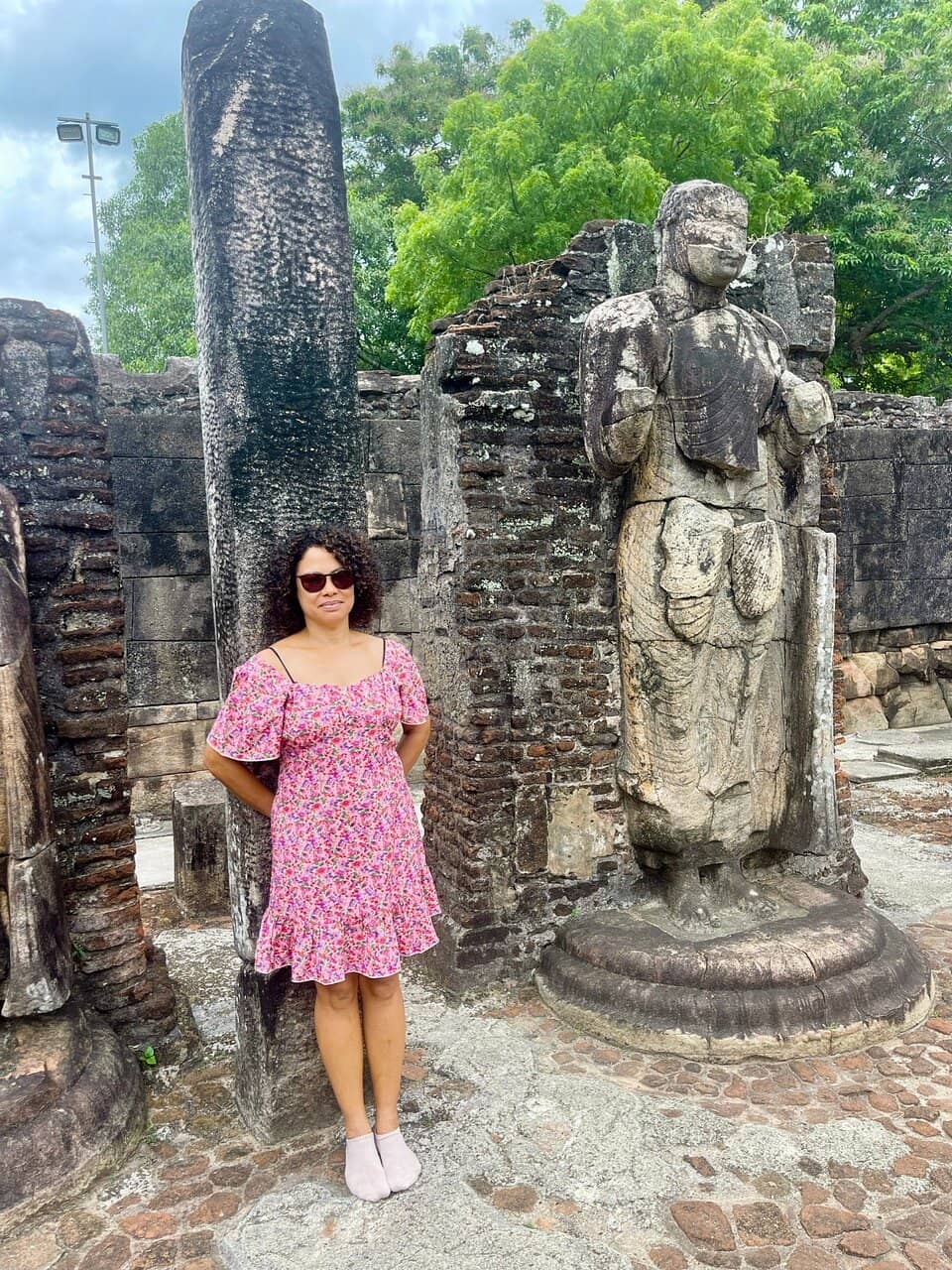
Highlights
Must-see attractions

Social
From TikTok & Reddit
Best Time
Beat the heat and crowds

Atadage
Best Time
Beat the heat and crowds

Highlights
Must-see attractions
Ancient shrine built by King Vijayabahu I, housing the Sacred Tooth Relic, known for its 54 stone pillars and intricate carvings.
"A powerful glimpse into the religious devotion and craftsmanship of the Polonnaruwa period."
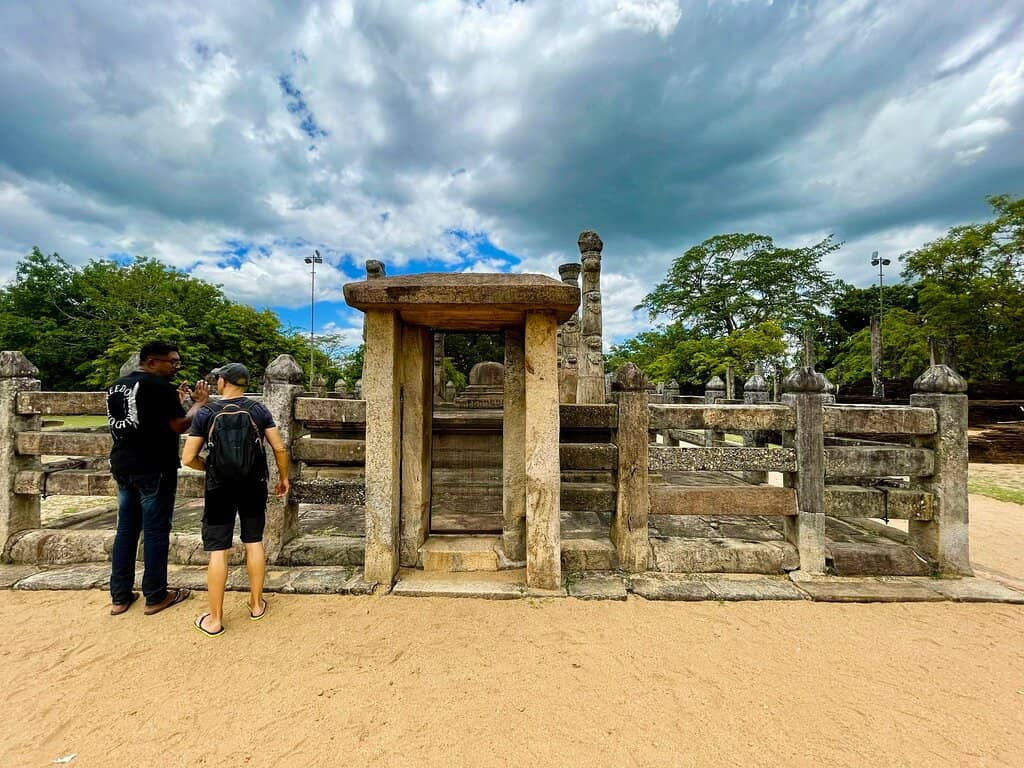
👟 Remove Shoes & Hats
Always remove footwear and headwear before entering sacred areas.
📸 Respect Photography Rules
Be mindful of where you can take photos, especially inside religious buildings.
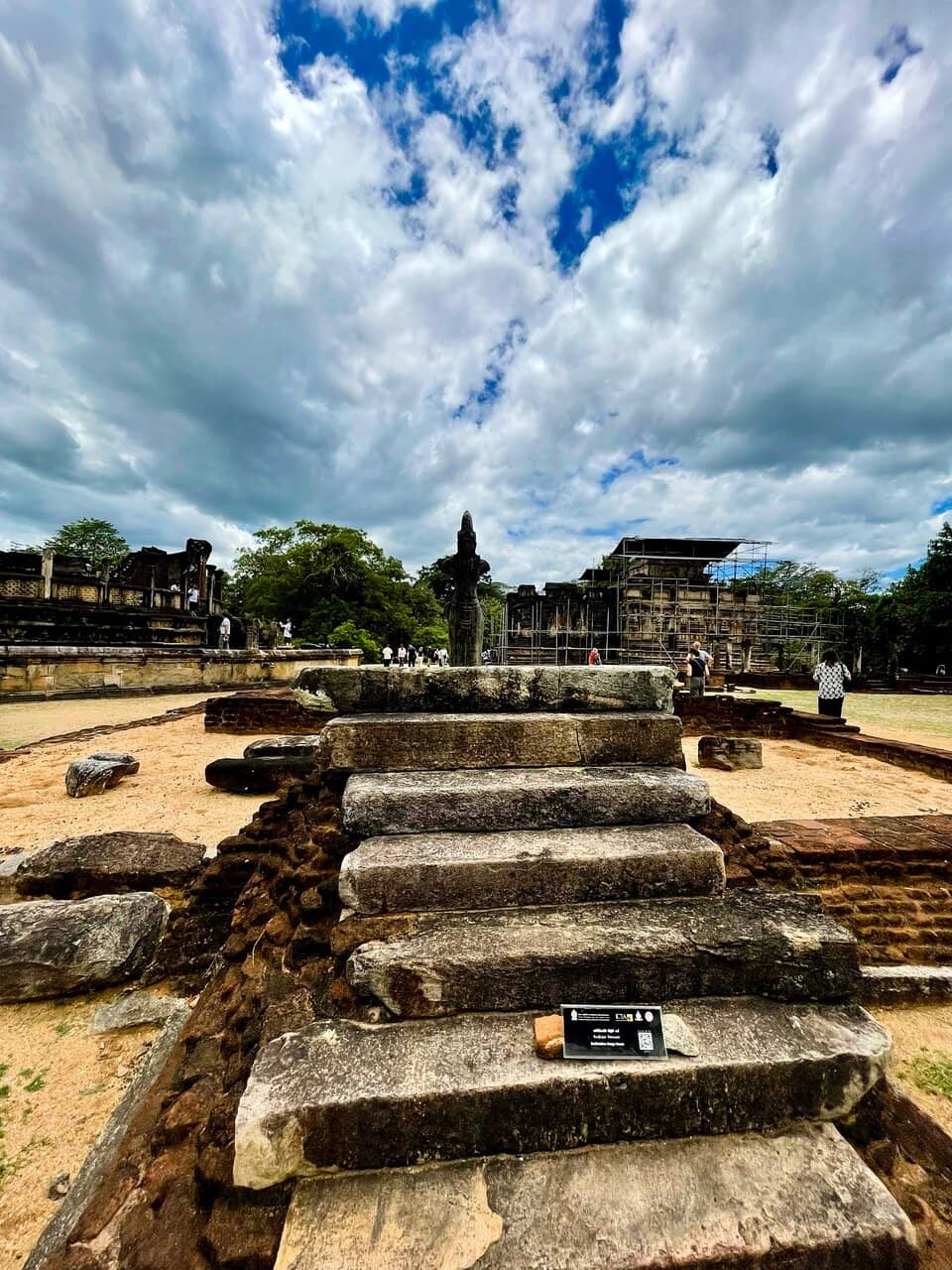
Highlights
Discover the most iconic attractions and experiences
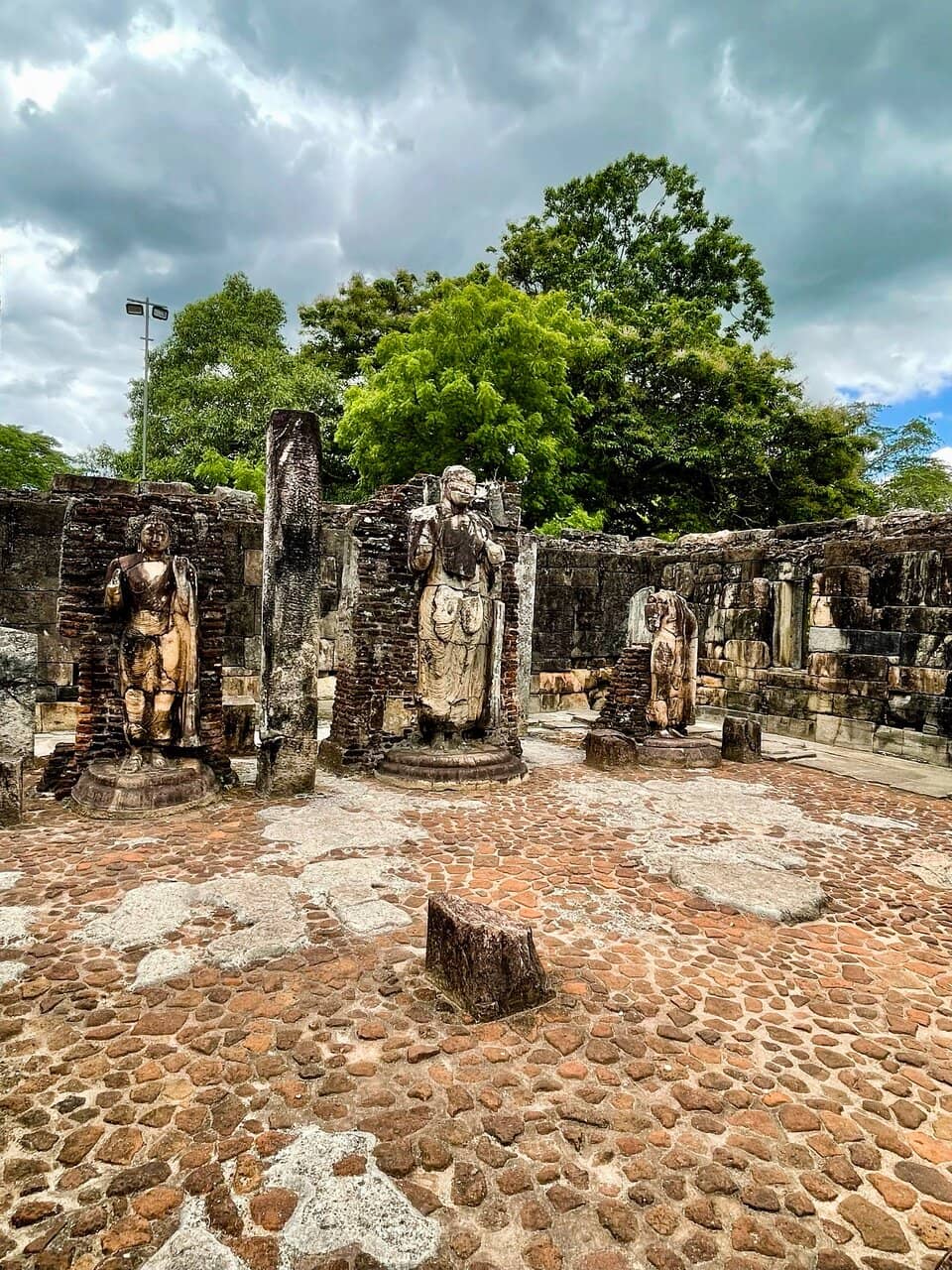
Stone Pillars
Main structure
Marvel at the imposing stone pillars that once supported a two-story structure, a testament to ancient architectural prowess.
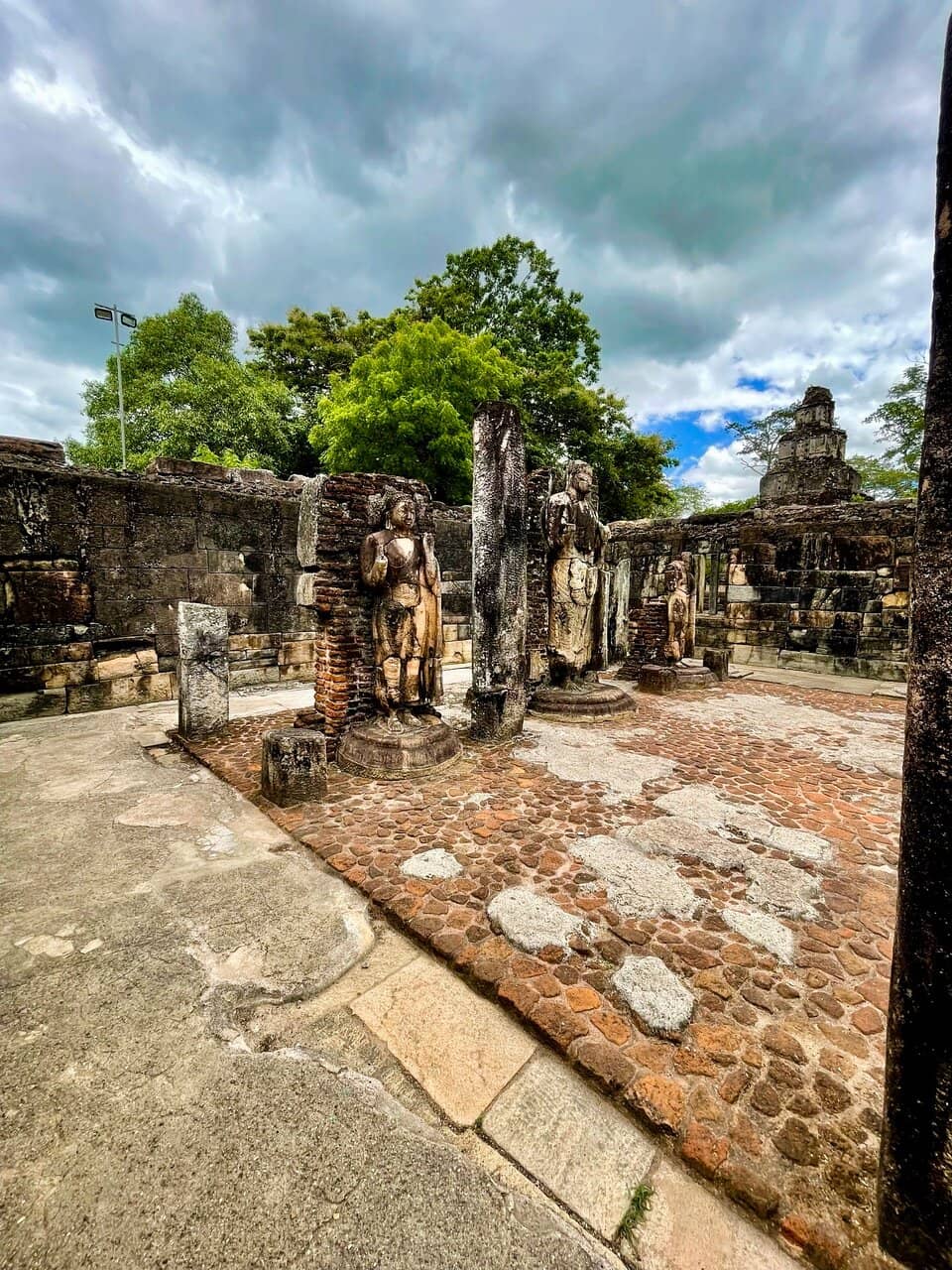
Buddha Statues
Within the shrine
Gaze upon the remaining Buddha statues, offering a glimpse into the spiritual significance and artistry of the era.
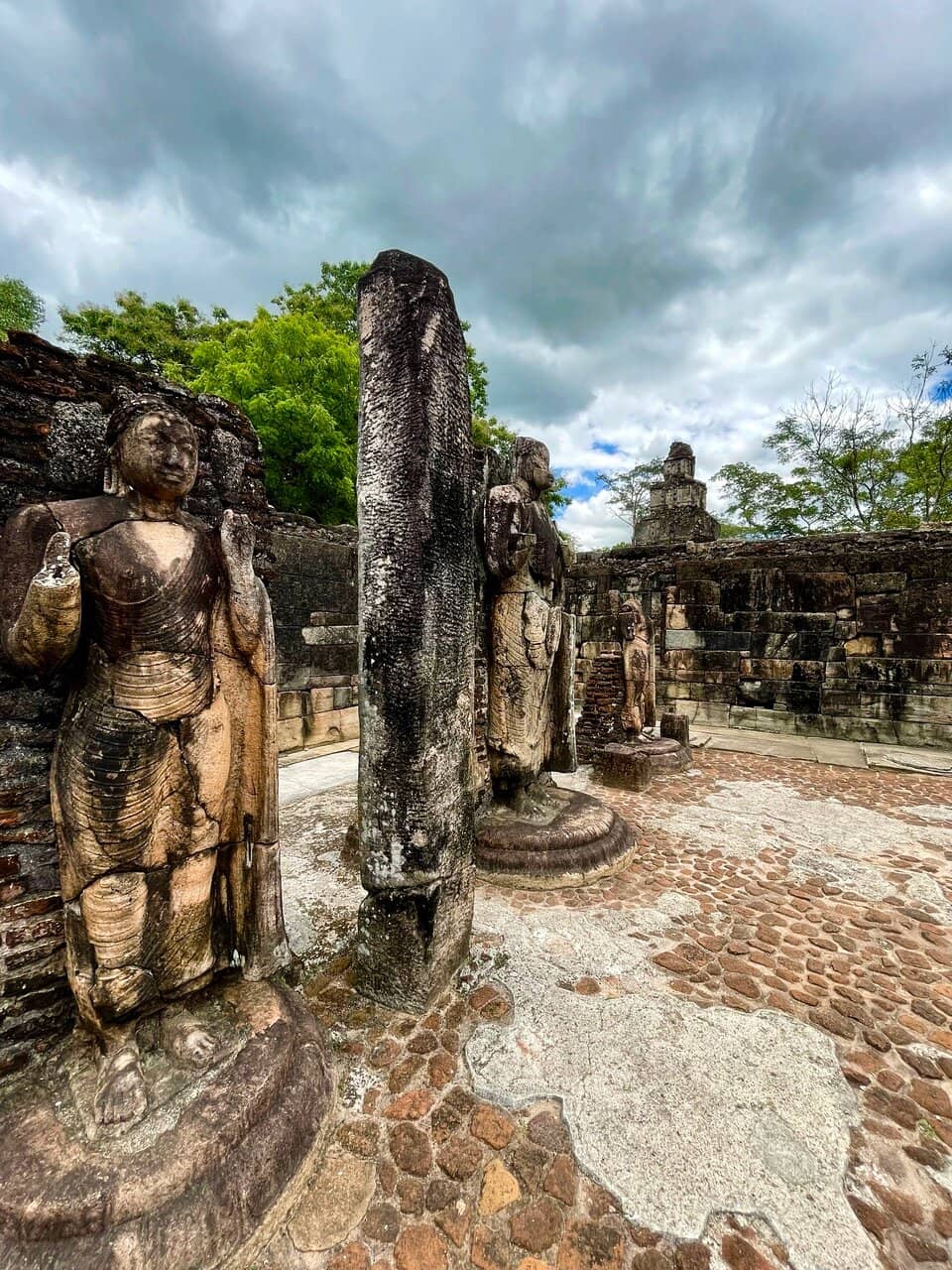
Engravings and Carvings
Walls and structures
Discover intricate engravings and carvings that tell stories of ancient beliefs and craftsmanship, adding depth to your visit.
Plans like a pro.
Thinks like you
Planning Your Visit
Respectful Attire is Key
Photography Rules
Best Times
Insider Tips
from TikTok, Instagram & Reddit
👟 Remove Shoes & Hats
Always remove footwear and headwear before entering sacred areas.
📸 Respect Photography Rules
Be mindful of where you can take photos, especially inside religious buildings.
🚶♀️ Explore with Vatadage
Visit Atadage alongside the nearby Vatadage for a comprehensive ancient city experience.
💧 Stay Hydrated
Carry water, especially during warmer months, as you explore the ruins.
Tips
from all over the internet
👟 Remove Shoes & Hats
Always remove footwear and headwear before entering sacred areas.
📸 Respect Photography Rules
Be mindful of where you can take photos, especially inside religious buildings.
🚶♀️ Explore with Vatadage
Visit Atadage alongside the nearby Vatadage for a comprehensive ancient city experience.
💧 Stay Hydrated
Carry water, especially during warmer months, as you explore the ruins.
What Travellers Say
Reviews Summary
Atadage is praised for its historical significance as one of the oldest Tooth Relic shrines and its impressive ancient architecture, particularly the stone pillars and carvings. Visitors appreciate its spiritual ambiance and its role in understanding Sri Lanka's Buddhist heritage. Some find the site to be partially ruined, but it still offers a compelling glimpse into the past.
"The Hatadage at Polonnaruwa is the oldest monument in the city's so-called Sacred Quadrangle, a dense agglomeration of architecture dating to the 11th and 12th centuries. Built by Vijayabahu I (ruled 1055–1110), it is the older of the two Tooth Relic shrines in the city, the other being the adjacent Hatadage. Its name, Atadage, is a portmanteau of Hata (eight) and dage (shrine), implying that it housed eight relics of the Buddha. Among these were the Buddha's Tooth and Bowl relics, both of which became virtual palladiums of the empire, synonymous with the divine right to kingship. Although the Tooth Relic remains a revered symbol of Sri Lankan Buddhism, safely ensconced in its purpose-built temple in Kandy, the bowl relic was last seen in the days of King Parakramabahu IV (r. 1302-32) of Haththigiri-pura (modern Kurunegala). After vanishing in the Mahavamsa chronicles, it has never been heard of again."
Chamil Suresh
"Hatadage is a historic shrine in Polonnaruwa built by King Nissanka Malla to house the Sacred Tooth Relic of the Buddha. Made of stone and brick, the structure still features standing Buddha statues and impressive carvings. Though partially ruined, it offers a powerful glimpse into the religious devotion and craftsmanship of the Polonnaruwa period. The site has a calm, spiritual feel and is located near the Vatadage, making it easy to visit both together. A must-see for those exploring Sri Lanka’s ancient Buddhist heritage."
Peri Inban
"Grade and wonderful creation in Polonnaruwa era. Atadage Dalada Maligaya is the house of the tooth relic of Buddha built by King Vijayabahu I (1070-1110). This building is built on 54 stone pillars.Originally this was a two-storied building and there was a stairs to climb to the top."
ramees ra
What People Like
What People Dislike
Frequently Asked Questions
🚇 🗺️ Getting There
Atadage is located within the ancient city of Polonnaruwa, Sri Lanka. You can reach Polonnaruwa by bus or train from major cities like Colombo or Kandy. Once in Polonnaruwa, you can hire a tuk-tuk or rent a bicycle to explore the ancient city, including Atadage.
Yes, Atadage is typically included within the entrance ticket for the Polonnaruwa Ancient City, which covers multiple historical sites. It's advisable to purchase a combined ticket for the best value.
Many visitors find renting a bicycle or hiring a tuk-tuk to be the most convenient ways to explore the sprawling ancient city of Polonnaruwa, including Atadage.
While not always advertised, local guides can often be hired at the entrance to the ancient city who can provide insights into Atadage and other ruins.
Atadage itself can be explored in about 30-45 minutes, but it's often visited in conjunction with other nearby sites like the Vatadage, so plan for at least 2-3 hours for the general area.
🎫 🎫 Tickets & Entry
Atadage, as part of the Polonnaruwa Ancient City, is generally open from early morning until late afternoon or early evening. It's best to check the official timings upon arrival or online.
The entrance fee is for the entire Polonnaruwa Ancient City archaeological site. Foreigner prices are typically higher than for locals. Check the Department of Archaeology's website for current rates.
Tickets for the Polonnaruwa Ancient City, including Atadage, can usually be purchased on-site. Advance booking is generally not required unless you are part of a large organized tour.
Visitors are required to dress modestly, covering shoulders and knees, and remove shoes and hats before entering the sacred areas.
Due to its ancient nature, accessibility can be challenging. The terrain is uneven, and there are steps. It's advisable to contact local authorities for specific accessibility information.
🎫 🏛️ Onsite Experience
Atadage, meaning 'House of Eight Relics,' was built by King Vijayabahu I in the 11th century to house the Sacred Tooth Relic of the Buddha. It's one of the oldest Tooth Relic shrines in Polonnaruwa.
Modest clothing is essential. Ensure your shoulders and knees are covered. You'll also need to remove your shoes and any hats before entering.
Photography might be restricted inside certain parts of the shrine. Always look for signs or ask for permission before taking pictures.
Look out for the impressive stone pillars, remaining Buddha statues, and intricate carvings that adorn the structure.
Crowds can vary depending on the time of day and season. Visiting early in the morning or late in the afternoon can help avoid peak times.
📸 📸 Photography
The imposing stone pillars and the overall structure against the sky offer great photographic opportunities. The surrounding ancient city also provides a picturesque backdrop.
Yes, photography may be prohibited inside certain areas of the shrine, especially where religious artifacts are kept. Always be respectful of local customs and signage.
Early mornings or late afternoons offer softer light, ideal for capturing the details of the ruins and creating a more atmospheric shot.
A wide-angle lens is useful for capturing the scale of the ruins, while a standard zoom lens can be used for details like carvings. A tripod might be restricted in some areas.
Drone photography is generally prohibited in archaeological sites and national parks in Sri Lanka to protect the heritage and wildlife. Always check local regulations.
For Different Travelers
Tailored advice for your travel style
👨👩👧 Families with Kids
To make the visit more enjoyable, consider renting bicycles to explore the ancient city, allowing kids to move at their own pace. Pack plenty of water and snacks, as facilities within the archaeological park can be limited. The open spaces around Atadage also provide room for children to move around, but always supervise them closely due to the historical and potentially fragile nature of the ruins.
📸 Photography Enthusiasts
Be mindful of photography restrictions within the shrine itself, as flash photography and filming might be prohibited in certain areas. Consider using a wide-angle lens to capture the scale of the site and a prime lens for detailed shots of the carvings. Respect the site's sanctity and avoid intrusive photography that might disturb other visitors or the spiritual atmosphere.
Deep Dives
In-depth insights and expert knowledge
The History and Significance of Atadage
The structure itself is a testament to the architectural capabilities of the Polonnaruwa era. It was originally a two-storied building constructed on 54 stone pillars. Access to the upper floor, where the relic was likely kept, was via a staircase. While much of the original wooden structure has succumbed to time, the remaining stone pillars and a few steps of the staircase offer a glimpse into its former grandeur. The presence of the Tooth Relic was crucial, as it was considered a symbol of divine right to kingship in Sri Lankan monarchies.
Today, though partially in ruins, Atadage remains a powerful reminder of Sri Lanka's deep-rooted Buddhist heritage. Visitors can still appreciate the impressive stone carvings and the standing Buddha statues that have endured through centuries. Its proximity to other major sites like the Vatadage makes it an integral part of any exploration of the Polonnaruwa Ancient City, offering a profound connection to the island's historical and spiritual past.
Architectural Features and Preservation
The shrine also features windows made of rock, a unique detail that speaks to the craftsmanship involved in its construction. While the original wooden elements have largely deteriorated, the stone components, including the pillars and some walls, have remarkably withstood the test of time. The remaining standing Buddha statues and intricate engravings on the stone surfaces offer valuable insights into the religious iconography and artistic styles prevalent during the Polonnaruwa period.
Preservation efforts focus on maintaining the integrity of the existing stone structures and preventing further decay. Visitors are encouraged to tread carefully and respect the ancient materials. The site, though in ruins, retains a serene and spiritual atmosphere, allowing visitors to connect with its historical significance and architectural legacy.





Social
from TikTok, Instagram & Reddit